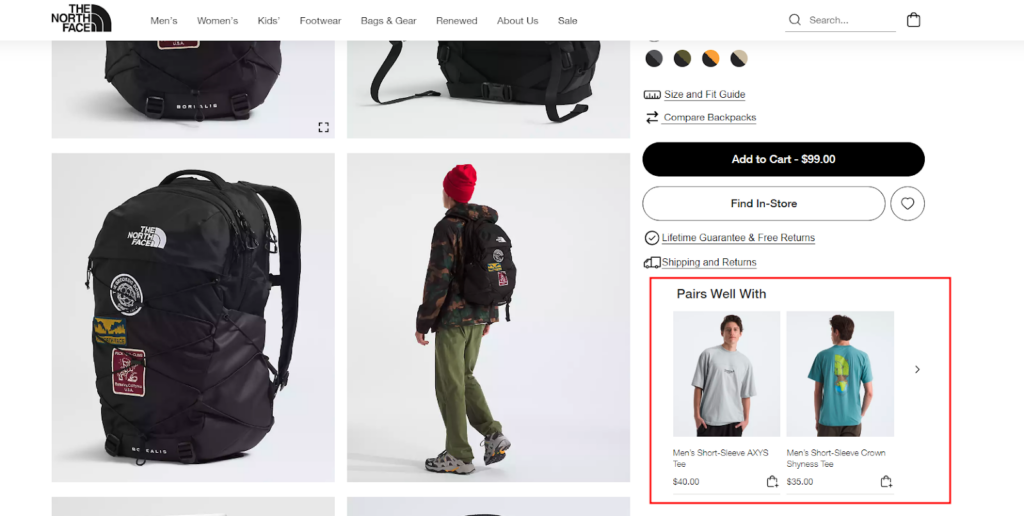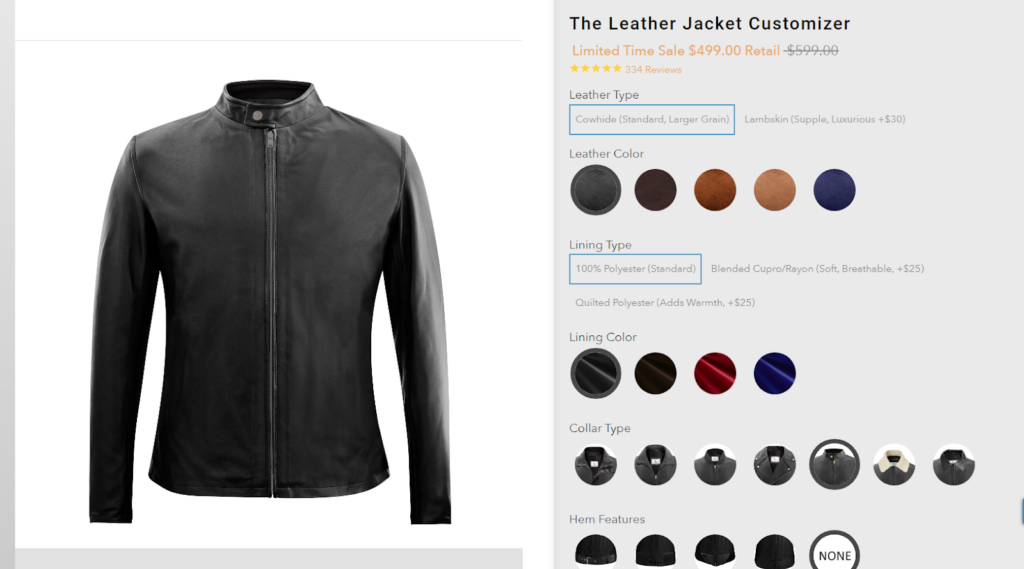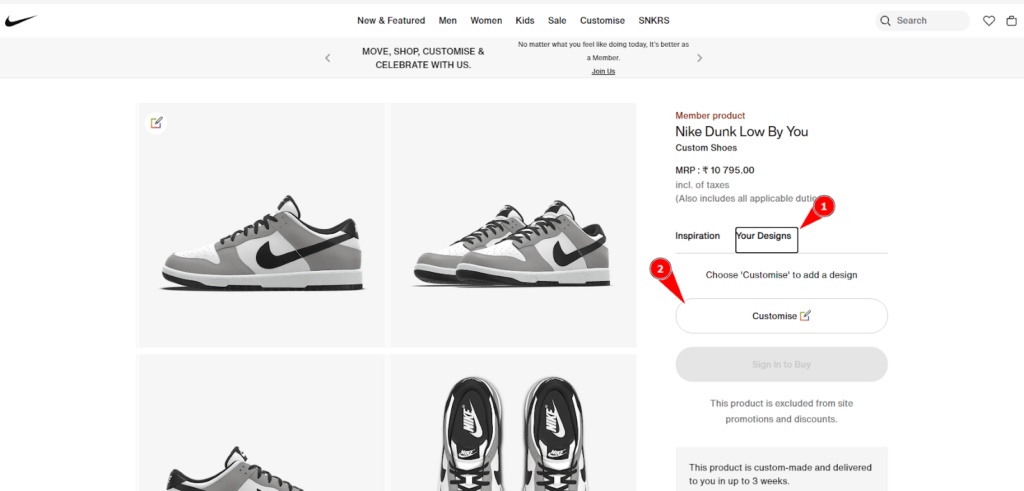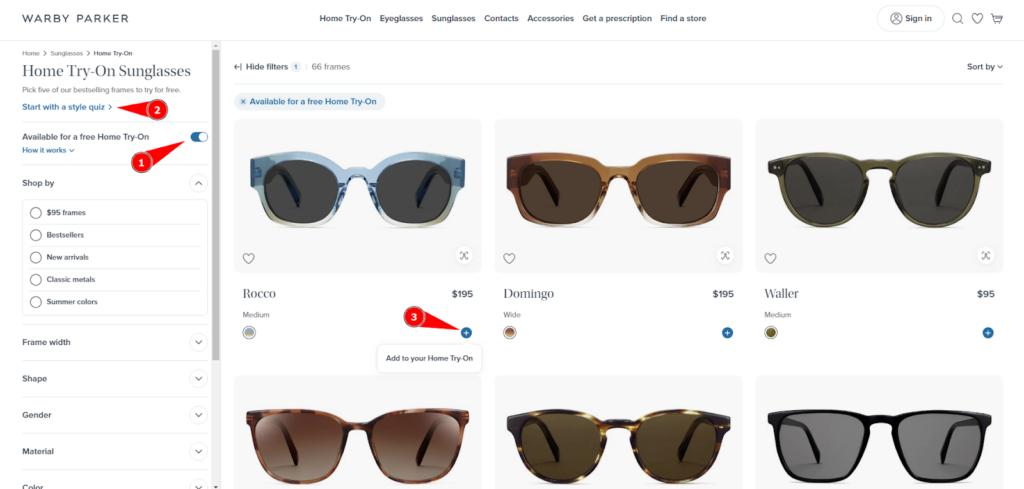Personalization vs. Customization in eCommerce: How Do They Differ?

You’ve probably encountered the terms “personalization” and “customization” now and then in your eCommerce journey. It’s because both are very crucial for your business and existence in this competitive market.
However, some merchants often need clarification on these two. It’s natural to get confused as they are kind of similar, but still are different. If you’re having the same trouble, here is the chance to know these concepts with more clarity.
In this comprehensive guide, we’ll break down the differences between personalization and customization in eCommerce, explain how each works, and show you how to leverage them to boost sales and customer satisfaction.
So, let’s get started!
What is Personalization in eCommerce?
In eCommerce, personalization is all about creating unique shopping experiences for every online shopper that lands on your website. In offline shopping, it’s like someone greets you by name, remembers your preferences, and suggests products you’ll genuinely love (when you revisit a grocery store or salon you like).

The salesperson remembers you and already knows your favorite brands, styles, and sizes. That’s what personalization does in your eCommerce stores, but virtually.
How Personalization Works in eCommerce?
Hint: The line before this section is the answer! 😉
Personalization works on the power of remembering the customer and their preferences. Now, in offline shopping, the staff used to do this for your customers, but in online shopping, there are special mechanisms used to do the same.
These personalization features are available in many third-party applications or extensions that you can integrate based on your eCommerce platform. It can help you to gather information about their visitors. This could be anything from what products they browse to the items they add to their cart (but never buy).
With this intel in hand, online stores can then tailor the shopping experience for each individual.
Here are some real-life examples of personalization in action:
- Recommendation engines based on browsing history and purchase behavior.
- Personalized product suggestions and upsells/cross-sells.
- Segmented email marketing campaigns.
- Dynamic content based on user location, demographics, etc.
- Chatbots and virtual assistants offering personalized support.
- Saved Searches or recently viewed items.
Now, we’ve understood the term personalization. Next comes the second one: customization!
What is Customization in eCommerce?
Customization is an approach in eCommerce where customers are given options to customize the product they wish to purchase, such as customized business cards that reflect their unique brand identity. As a merchant, you might offer options to select the product variants like color, size, etc. But customization goes beyond this.
In customization, online shoppers are allowed to modify or tailor the product as per their tastes, needs, or preferences. It gives customers a sense of ownership and individuality. They can create a product that perfectly reflects their style and personality, which makes it more special and meaningful.

“Print on demand” is the best example of eCommerce customization where customers can send their designs to the merchants to get custom printed items like t-shirts, mugs, even custom rugs etc.
How Customization Works in eCommerce?
There are many tools available that can help you enable customization functionality in your online store. These tools manage the product data, customer options, and design functionalities.
The customers can upload images, select colors, and patterns, and manipulate the design of the product itself. These interactive tools let the customers see their design choices and changes they made in real time. Customers can virtually interact with the product in 3D or see how it would look in their own space using Augmented Reality.
Here are some real-life examples of Customization in eCommerce:
- Build-your-own product options (e.g., Tshirt, phone case)
- Engraving or personalization with initials, logos, etc.
- Uploading photos or designs for printing on products.
- Subscription box customization options.
- User-generated content integration.
- User interface customization (e.g., preferred language, content layout).
After understanding both concepts in detail, we shall learn how both are different from each other. Let’s go!
Personalization vs Customization: What’s the Difference?
Understanding the distinction between these two concepts is important for eCommerce merchants who want to offer a superior customer experience.
Here’s the table that showcases the difference between personalization and customization:
| Factors | Personalization | Customization |
| Control | Merchant curates the experience based on predictions | The customer has full control over modifications |
| Data source | User data (browsing history, purchase history, demographics) | Limited data required (use some preferences) |
| Technology | Data analysis tools and recommendation engines | Interactive design tools, product configurators, 3D/AR viewers |
| Focus | Tailoring the shopping experience for the shoppers | Offering shoppers the option to customize the product |
| Shopper’s Involvement | Shoppers are involved passively | Active participation of shoppers is required |
| Niche | It works for all types of products. | It is not suitable for all product categories. |
| Scalability | It can be easily scaled across a large customer base | It might require more resources for complex configurations |
| Benefit | Effortless, convenient, feels curated | Sense of ownership, unique product |
As you can see, both are different but also similar when offering a better shopping experience and boosting the conversion rate. But before you jump in and incorporate them into your online store, let’s take a look at the pros and cons to see if it’s the right fit for your store.
Pros and Cons of eCommerce Personalization
Here are all the possible advantages and disadvantages of Personalization in eCommerce:
| Pros | Cons |
| Personalized content keeps customers more engaged and increases customer satisfaction. | Expensive and time-consuming to integrate personalization tools or functionalities. |
| Boosts sales by presenting relevant products and offers. | There can be privacy concerns with customer data collection and usage. |
| Promotes upselling and cross-selling with relevant recommendations. | It requires managing and analyzing large volumes of data. |
| Relevant upsells and cross-sells increase spending (AOV). | Continuous data updates and management are necessary. |
| Valuable customer behavior data refines marketing strategies. | Inaccurate data can lead to poor or irrelevant suggestions. |
| It differentiates your store from competitors. | It can make customers feel uncomfortable or stalked. |
| Customers can view your brand as attentive and customer-centric. | |
| Aligns stock with customer preferences to reduce overstock. |
Now, let’s check the good side and the bad side of customization in the next section.
Pros and Cons of eCommerce Customization
Here are all the possible advantages and disadvantages of customization in e-commerce:
| Pros | Cons |
| The customization process can be a fun and engaging experience for customers. | Customization is not suitable for all products. |
| Customization allows you to offer unique products that your competitors can’t match. | Adding customization options to your products can make your operations more complex. |
| When customers can create products that perfectly suit their needs and tastes, they’re more likely to be happy with their purchase. | Customized products may take longer to produce and ship than standard products. |
| Customers are often willing to pay more for products that they have customized themselves. | Customers may make mistakes during the customization process, or there may be problems with production. |
| Customization can help to reduce shopping cart abandonment by giving customers a reason to complete their purchases. | Too many customization options can overwhelm customers and make it difficult for them to make a decision. |
| Through the customization process, you can collect valuable data about your customers’ preferences. | |
| By offering unique products, customization can turn customers into brand advocates. | |
| When customers are happy with their customized products, they are less likely to return them. |
The pros are really impressive but on the other side, the cons are a little scary. I would suggest you take them as the areas to improve your personalization or customization strategies.
Now you must be wondering whether to use personalization or customization. The next section has the answer.
Let’s check!
What to Use: Personalization or Customization or Both?
So, are you sold on the idea of tailoring the shopping experience for your customers??
But with both personalization and customization on the table, you might be wondering which is the right approach for your eCommerce store. The answer, as with most things in business, is “it depends”.
Here we will discuss some factors to consider when choosing between personalization and customization strategies (like product type, target audience, business goals, etc.)
When to use personalization?
Personalization excels at creating a unique experience for each customer without them needing to actively participate.
Here’s when personalization works great for your business:
1# Targeting specific customer segments.
You can segment your audience based on demographics, purchase history, or browsing behavior and then modify product recommendations, promotions, and website content to resonate with each segment.
2# Upselling and cross-selling relevant products.
Ofcourse, who does not need these conversion boosters? Earlier people used to create upsells or cross-sell manually. But with the latest ecommerce personalization trends, businesses can now use AI to suggest hyper-relevant products to make it personalized for individual shoppers.
3# Creating a dynamic and engaging shopping experience.
Personalization keeps things fresh for your customers. By tailoring product recommendations, search results, and website content based on past behavior and browsing history, you can create a more engaging and dynamic shopping journey for each customer.
When to use customization?
Customization allows customers to actively design products to their liking and connect with the brand.
1# Offering unique and differentiated products.
Customization allows you to stand out from the crowd. By letting customers personalize products with their own designs, text, or colors, you create unique offerings that can’t be found elsewhere.
2# Catering to niche markets with specific needs.
Customization is perfect for tapping into niche markets with specific requirements. As discussed above, customization is not friendly to any product category. Have a product that caters to a specific audience with unique needs? Customization lets you offer solutions that traditional, one-size-fits-all products can’t match.
Read more: 13 Best eCommerce Niches With High Growth Potential
3# Building a sense of ownership and emotional connection with products.
There’s something special about having a product you designed yourself. Customization gives a sense of ownership and emotional connection that can lead to increased brand loyalty and customer satisfaction.
The good news is that personalization and customization aren’t mutually exclusive! Many businesses find success by implementing a combination of both strategies.
Let’s explore it in detail.
Case Studies: How Successful Brands Use Personalization and Customization?
In many cases, you don’t have to choose between personalization and customization. A winning strategy often combines both approaches.
For instance, you could offer personalized product recommendations alongside the option to customize the design. This creates a dynamic shopping experience that caters to individual preferences while still offering unique options.
Here are some case studies of eCommerce businesses that have thrived using the combination of personalization and customization strategies:
1. Nike

Nike understands that every athlete is unique. They use browsing history and purchase data to suggest personalized product recommendations on their website. They also offer a robust customization platform where customers can design their own sneakers. Customers can choose colors, and materials, and create a truly personalized shoe they’ll love.
2. Warby Parker

Warby Parker is an online retailer of eyeglasses that offers a unique home try-on program. Customers can select up to five pairs of glasses to try on at home for free. This personalization strategy allows customers to find the perfect pair of glasses for their face shape and style.
Warby Parker also offers customization options, such as different lens colors and coatings. This combination of personalization and customization has helped Warby Parker to disrupt the traditional eyewear industry and become a popular brand among millennials.
3. The North Face

The North Face is an outdoor apparel brand that uses personalization to recommend products to customers based on their location and weather conditions. For example, if a customer is browsing the website from a location that is experiencing cold weather, they will see recommendations for jackets and boots.
The North Face also offers a customization program that allows customers to create their own custom jackets. This combination of personalization and customization has helped The North Face to provide a more relevant and engaging shopping experience for its customers.
Here are some examples of how top eCommerce brands use personalization and customization for their shoppers. You can also reap the benefits of these strategies and improve the user experience as well as conversion rate.
The next section will guide you with some ideas to effectively use the combination of personalization and customization.
How to Combine Personalization and Customization for Maximum Impact?
As we all learned above, both personalization and customization are meant to offer customer engagement. But you don’t need to choose from both.
If your product line supports customization then you can combine it with personalization and make your implementation more impactful. So, while personalization and customization are separate strategies, they work beautifully together to create a truly engaging and impactful ecommerce experience.
Here’s how you can create a winning formula by combining personalization and customization in your eCommerce store:
1# Personalized Recommendations for Customization
Suppose a customer who consistently buys customized sports T-shirts from your online store. Wouldn’t it be helpful to recommend a water bottle or cap during customization? Personalization makes customization relevant and can guide your customers toward features that enhance their experience.
For that, you need to leverage customer data on past purchases, browsing behavior, and wishlist items. You can use this data to trigger relevant customization options during the product configuration process.
2# Targeted Upsells Based on Customization
Upselling complementary products alongside chosen customizations increases the average order value and creates a more complete user experience. You can set up automated upsell suggestions within your customization tool. As a customer selects customization options, suggest relevant add-on items that complement their choices.
For example, someone customizing a phone case might appreciate recommendations for a screen protector and a portable charger based on the material and design chosen for the case.
3# Data-Driven Customization Options
As discussed above, based on a customer’s browsing history and virtual try-on preferences, Warby Parker highlights specific frame styles or lens colors within their customization options, subtly nudging the customer towards products they’re likely to love.
Understanding your customer base allows you to offer relevant and popular customization options. This ensures a smooth customization experience and avoids overwhelming customers with too many choices.
So, you should analyze customer purchase trends and popular customization combinations to create pre-configured bundles that cater to specific customer segments.
Quick Summary!
After reading this article you must be clear that personalization and customization are different from each other but still are best friends. As ecommerce businesses need to go beyond basic transactions to create a captivating shopping experience, both of them offer a dynamic duo to achieve this.
Here we’ve unpacked the differences between these two powerful strategies and explored how to leverage them effectively. You can implement them in your online store to maximize your customer satisfaction and strengthen your market position.
But first of all, you need in-depth planning to curate the personalization and customization strategies for your unique business models. Otherwise, you can face many challenges (as discussed above in the pros and cons section).
Want to discuss this with our eCommerce experts?? Let’s connect and discuss how to successfully implement personalization, customization, or both!






Post a Comment
Got a question? Have a feedback? Please feel free to leave your ideas, opinions, and questions in the comments section of our post! ❤️